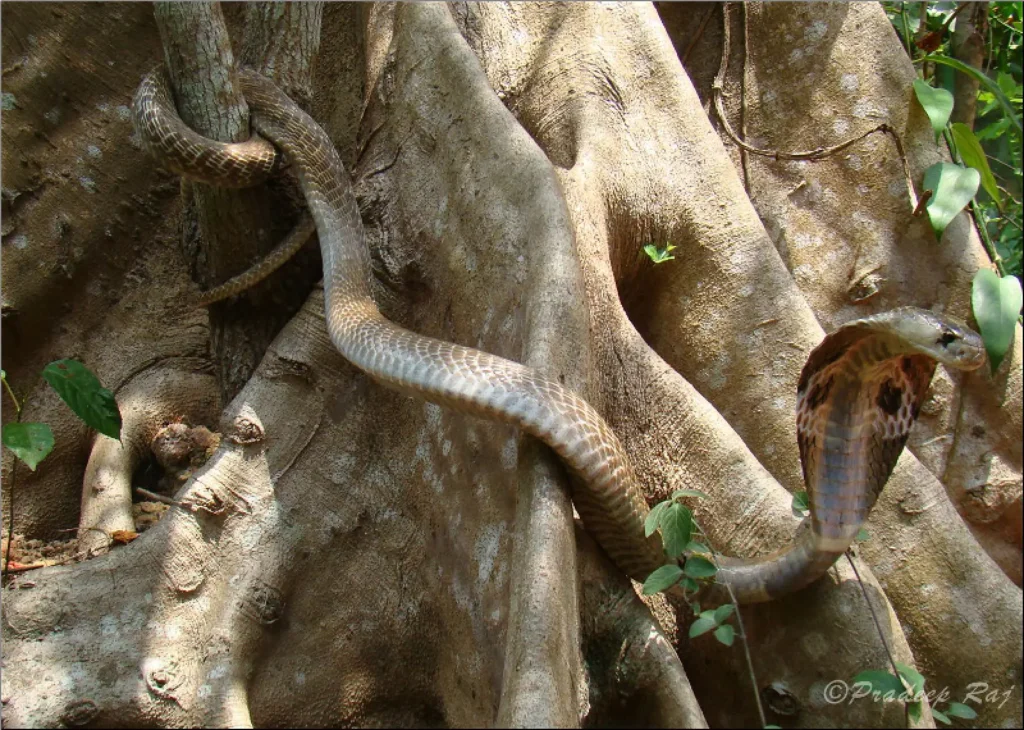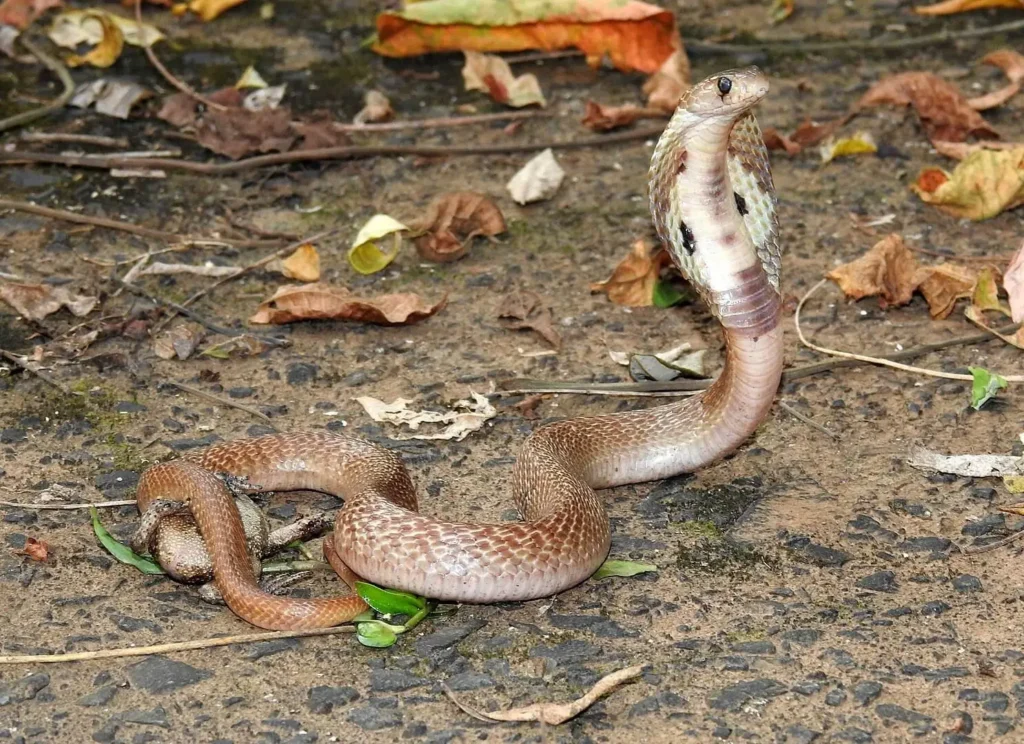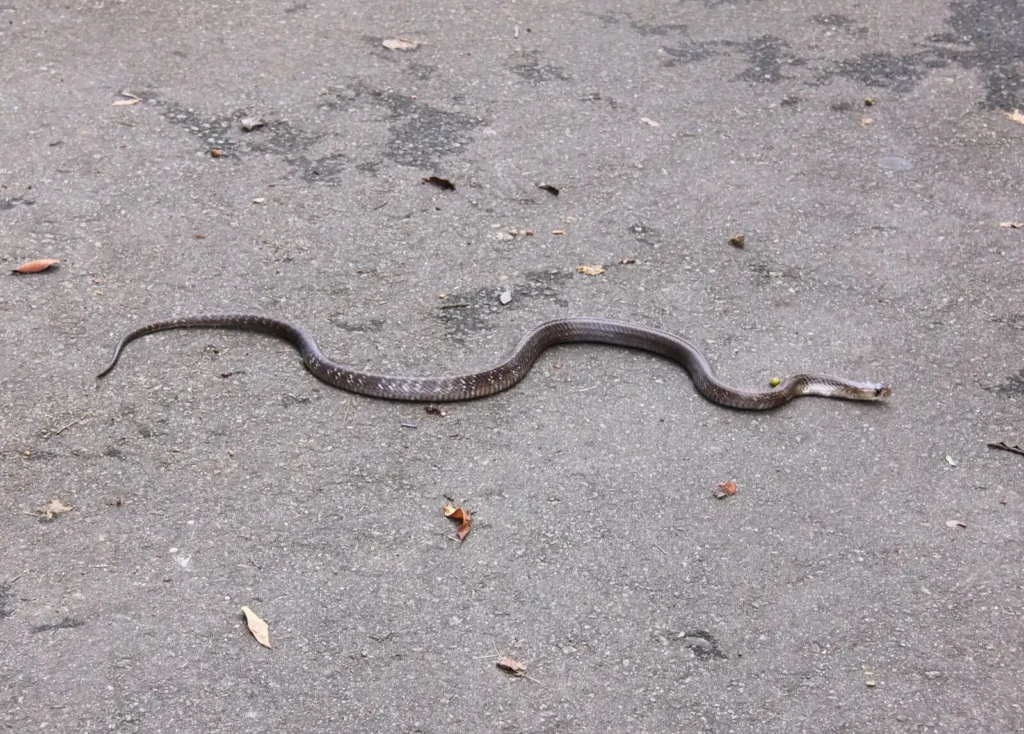Indian cobra (Naja naja) - is a symbol of Indian culture and one of the most famous venomous snakes in the world. Its characteristic "hooded" pose, hypnotic gaze and striking appearance evoke both admiration and fear. This cobra is not only a hero of legends and myths, but also a real inhabitant of the dense tropics of South Asia.

General classification 📘
• The Kingdom: Animals (Animalia)
• Type: Chordal (Chordata)
• Class: Reptiles (Reptilia)
• Row: Scaly (Squamata)
• Family: Aspidovye (Elapidae)
• Gender: Cobra (Naja)
• View: Naja naja
Appearance 🐍
• Body length: from 1 to 1.8 m, sometimes up to 2 m
• Colour: yellow to dark brown or black, with a characteristic spot on the "hood" - often in the form of glasses
• Body: slender, with smooth scales
• Chairman: slightly wider than the neck, rounded
• Feature: at the moment of danger, the neck hood expands, creating a threatening appearance

Range and habitat 🌏🌾
• Distribution regions: India, Pakistan, Sri Lanka, Nepal, Bangladesh, southern China
• Wednesday: tropical and subtropical forests, grasslands, agricultural lands, human settlements
• It is: even near houses, in rice fields and abandoned burrows
Behavior 🕵️♂️
• Activity: mostly daytime
• Temperament: usually avoids people, but can become aggressive if threatened
• Defensive behavior: raises the front of the body, expands the hood, hisses and makes false attacks
• Behavior with people: is often used in snake charmers' shows, although the music itself does not hypnotize her - she focuses on the movement of the flute
Nutrition 🍴
• Type: predator
• Diet: Mice, rats, frogs, birds, other snakes
• Hunting method: lightning bite with the introduction of poison, after which the victim loses mobility
• Role in nature: controls the number of rodents, which is important for agriculture

Poison ☠️
• Type: neurotoxic
• Action: paralysis of the respiratory system, cardiac arrest
• Bite Symptoms: severe pain, swelling, visual impairment, paralysis
• Mortality: without treatment - high; with the use of antivenin - the chances of survival increase significantly
• The amount of venom per bite: 150-200 mg (lethal dose for humans is ~12-15 mg)
• Usage: the venom is studied in medicine - to create medicines and analgesics
Reproduction 🐣
• Type: oviparous
• Mating season: spring - early summer
• Masonry: 10-30 eggs
• Incubation: 45-70 days
• Kids: are born completely independent and already poisonous
• Female: often guards the masonry - a rare behavior among snakes

Life expectancy ⏳
• In the wild: up to 15-20 years old
• In captivity: up to 22-25 years old
• Main threats: destruction of the environment, collection for show and medicine, motor vehicles
Security status 🛡️
• IUCN Red List: Least Concern
• Security measures: present in some reserves, regulation of shows with snakes
• Meaning: an important part of culture, folklore and the balance of ecosystems
Interesting facts 🤓
- ✅ Hindus honor cobra in religious festival Naga Panchami 🕉️
- ✅ Can "jump" forward during an attack - 1/3 of the body length
- Eyes have no movable eyelids - they are covered with transparent scales
- ✅ Often depicted on Hindu statues of Shiva
- ✅ In nature, he avoids contact with people, despite his "bad reputation"
Conclusion ✅
Indian cobra - is not just a venomous snake, but one of the most famous symbols of South Asia. Its hypnotic posture, impressive venom, and important role in nature make it a unique creature that should be studied, respected, and protected 🐍🌾🙏